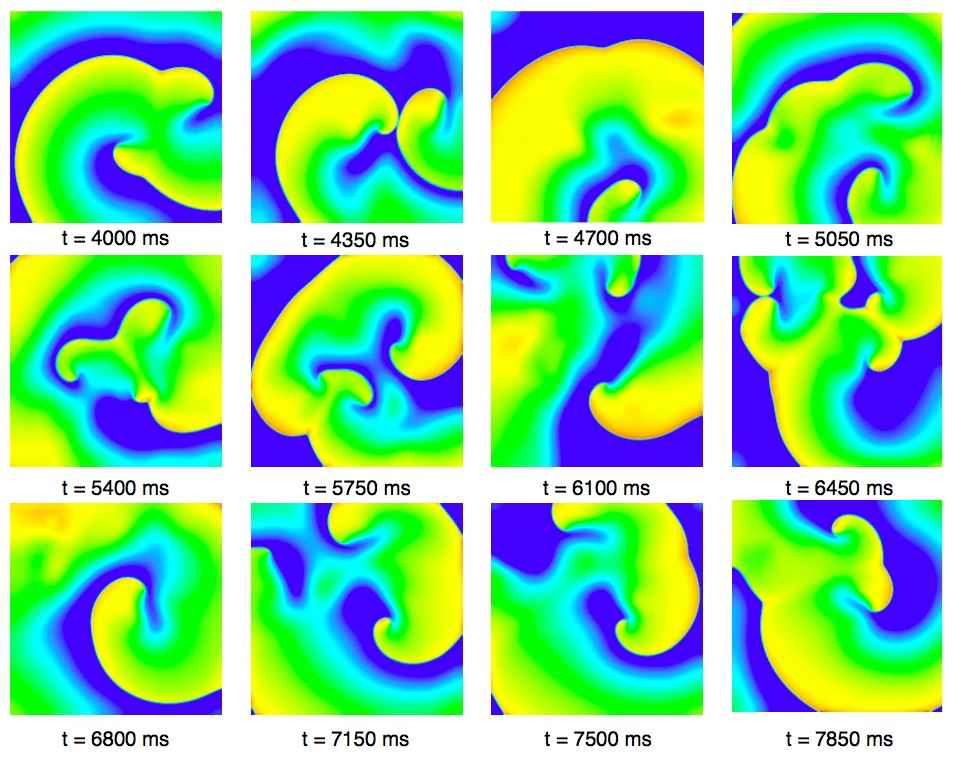Effects of Amiodarone on chronic atrial fibrillation: A simulation study in human cells and tissue
- Forschungsthema:Effects of Amiodarone on chronic atrial fibrillation: A simulation study in human cells and tissue
- Typ:Studienarbeit
- Betreuung:
- Bearbeitung:
-
Atrial fibrillation (AF) is an unphysiological rapid activation of the atria resulting in loss of contractility. Potential consequences of chronic AF are e.g. severe congestive heart failure, thromboembolism and stroke, cardiomyopathy, and ventricular arrhythmia. In order to treat AF, several therapies exist. On the one hand, invasive ablation strategies were used to limit re-excitation pathways leading to normal sinus rhythm. More often, drugs were applied in or-der to stabilize the electrical activity in the human atrium. One of the commonly used drugs is Amiodarone being a multi-channel blocker.
Cardiac cell models are capable to describe electrical phenomena in the heart. Specific models have been generated to reconstruct human atrial electrophysiology. In previous work, the ef-fects of remodeling occurring during chronic AF were implemented in the Courtemanche-Ramirez-Nattel (CRN) model. In a further study, the impact of Amiodarone was integrated in a model of the human ventricles.
In this computer-based study, the effects of Amiodarone on chronic atrial fibrillation should be integrated in the CRN model as well as examined regarding the success for the termination of re-entrant excitations in the human atrium and the prevention of AF initiation.

